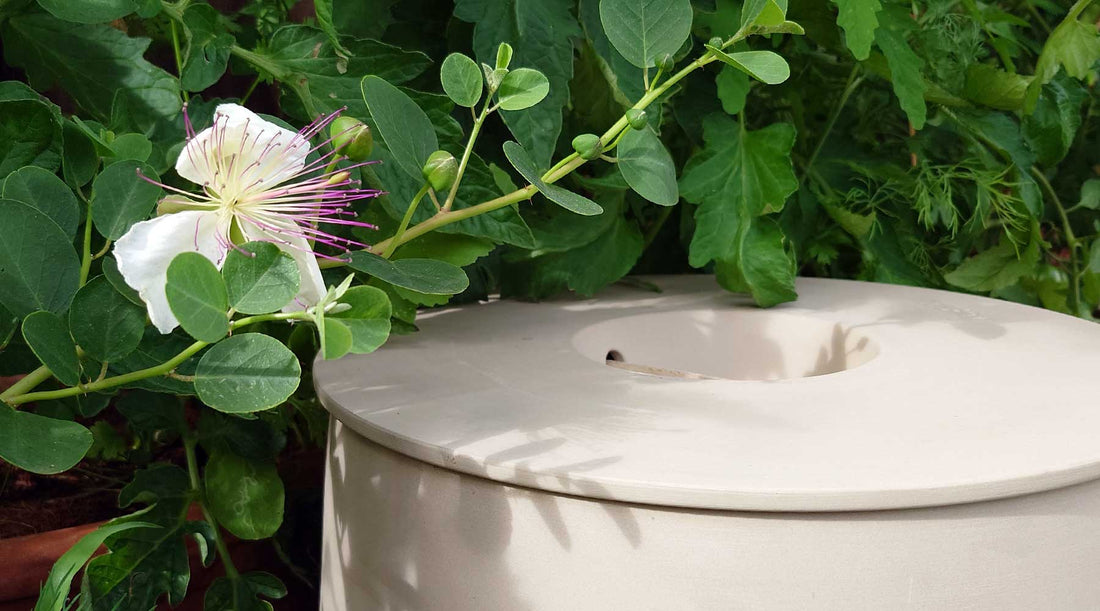Here are a few tips for everyone who spends the first summer with worms as farm animals or as a reminder for the long-established. Because not only humans, but also worms and microorganisms behave differently at extreme temperatures than at moderate ones.
IMPORTANT: In warm temperatures, increased attention is required for worm and compost welfare. Especially during longer periods of heat above 30°C.
The following preventive measures for vermicomposting in summer (list)
- Ensure a shady, cool spot for the composter
- Fill the lid with water (depending on the daily refill)
- Compost enough cardboard or woody material (litter).
- Feed carefully and not too much, better a little every day than a lot every week
- Place potted plants on and around the composter - evaporation from the leaves will cool the air down a bit.
Checklist
- Do the worms move away from the light at the speed of a worm?
- How warm is it in the composter? – Hand warm/ambient temperature? warmer? Put your hand in/over the compost and feel the warmth.
- How is the consistency? – Pleasantly loose, or slippery / slimy
- How does it smell – Earthy/woody or foul/uncomfortable?

The earth is crumbly, slightly damp, smells pleasant. The worms hide quickly after they are exposed to the light. That's how it should be!
Hints that it doesn't go all right
- Does the compost smell foul?
- Are there soggy spots where the waste sticks together?
- Is the composter hotter than the ambient/hand temperature?
- Do the worms all stick to the edge or under the cool lid? Do worms even escape from the composter?
Then something is wrong - act immediately and use the following tips to bring the temperature in the composter back down:
First aid if your worm composter overheats
- reduce feed, resp. no more waste in the composter
- Add large amounts of dry cardboard/woody litter and mix in
- Loosen up the material by mixing in the structure material/cardboard, distribute any hot areas or temporarily remove them completely
- Don't forget to fill the lid with water!
- No more watering when it's soggy
- Mix in soil (2-3 liters, e.g. garden soil)
If it's cool in the evening, you can air out all the elements by loosening the soil inside and leaving the composter open for a moment.
If anything is unclear , get in touch with us !
Background & Purpose First Aid
Temperatures > 30°C are no longer comfortable for compost worms. Microorganisms, which are absolutely necessary for the composting process, on the other hand, love the hot weather, they multiply profusely and break down the organic material very quickly. In doing so, the microorganisms consume a lot of oxygen, which the rest of the system then lacks and can “tippe over” as a result. The rapid composting also generates its own heat, which additionally heats the system. So the solution is to slow down the composting process. This is achieved by adding a lot of cellulose material (paper, cardboard, woody plant material, straw, etc.), since the microorganisms have more to “bite” there. It is better to pause the fresh food (setup waste, fresh, water-containing waste) in the critical phases. You can also create retreats for the worms with used, moistened potting soil - fill it in the elements and sprinkle some over your waste, especially at the beginning when your worm composter is not that full. Sufficient soil insulates against heat and allows the worms to retreat.

